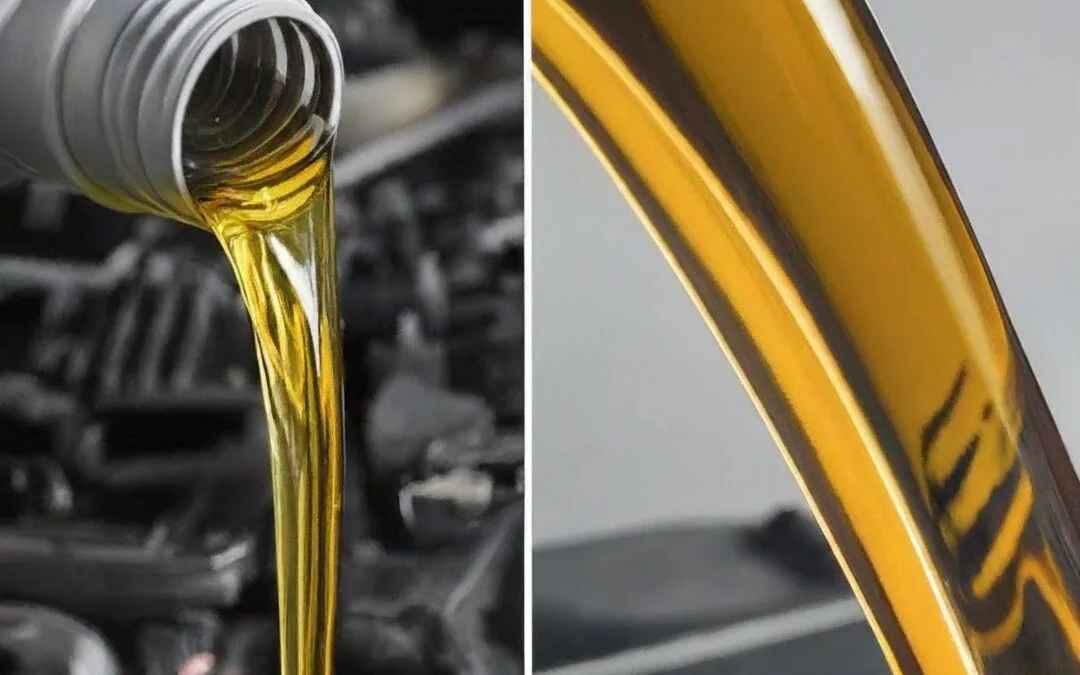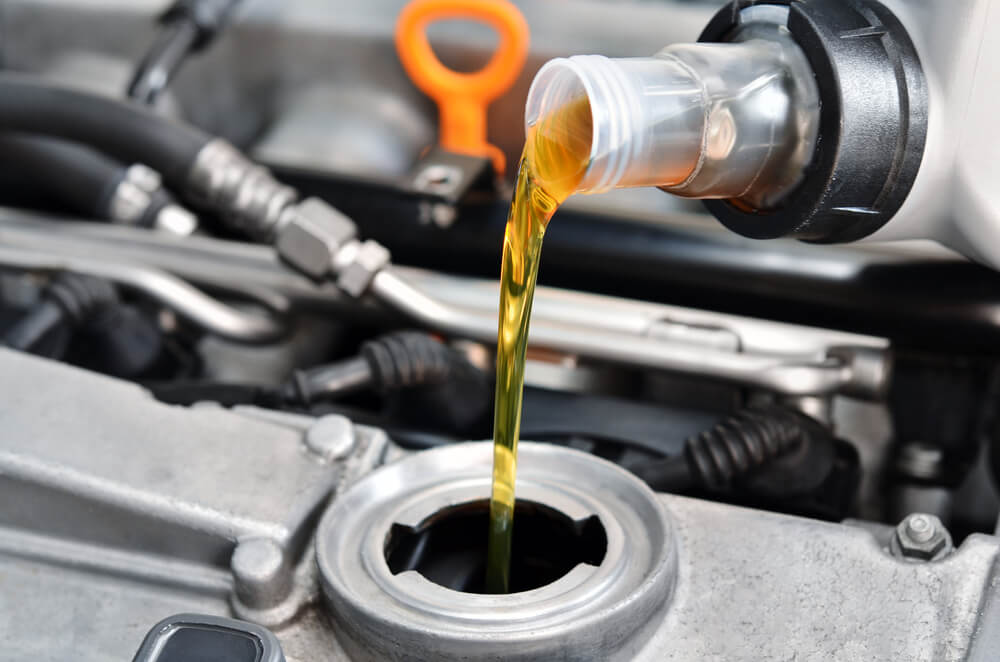Title: “What to Do with Motor Oil?”: Tips for Proper Disposal and Recycling
Introduction:
Motor oil is an essential lubricant for our vehicles, ensuring the smooth operation of engines and extending their lifespan. However, when it comes time to change the oil in your car or motorcycle, the question of what to do with used motor oil arises. Improper disposal of motor oil can have severe environmental consequences, including water pollution and harm to wildlife. Fortunately, there are responsible and eco-friendly ways to handle used motor oil, from recycling and reuse to understanding the legal regulations that govern its disposal. In this blog, we’ll guide you through the proper steps for dealing with used motor oil, emphasizing the importance of protecting our environment while maintaining your vehicles.
Reusing and Recycling: A Greener Approach to Motor Oil
When it comes to used motor oil, many people are unaware of the environmental impact that improper disposal can have. Rather than contributing to pollution and damage, a greener approach to motor oil management involves reusing and recycling. This not only helps protect our environment but also conserves valuable resources. Let’s delve into the details of why and how you should embrace the practices of reusing and recycling motor oil.
The Environmental Imperative
Improperly disposed of motor oil is a major environmental hazard. Just one gallon of used oil can contaminate a staggering one million gallons of water. This contamination not only affects aquatic life but also poses a risk to human health when our drinking water sources are compromised. Additionally, the improper disposal of motor oil contributes to soil pollution and the release of harmful greenhouse gases when incinerated.
Benefits of Recycling
Recycling used motor oil significantly reduces these adverse effects. Motor oil doesn’t wear out; it just gets dirty, and through recycling, it can be cleaned and used again. The benefits of recycling motor oil include:
- Resource Conservation: Re-refining used oil conserves the base oil, which is a non-renewable resource. This means less demand for new crude oil, helping to extend fossil fuel reserves.
- Energy Efficiency: The energy required to refine and re-refine used oil is considerably less than that needed to produce virgin oil. Recycling also reduces greenhouse gas emissions.
- Reduced Environmental Impact: Proper recycling reduces the risk of soil and water contamination. This is crucial for protecting our ecosystems and minimizing harm to aquatic and terrestrial life.
- Economic Benefits: The recycling industry creates jobs and contributes to the local economy. Many recycling centers pay for used motor oil, providing an economic incentive for responsible disposal.
Finding a Recycling Center
The first step in recycling motor oil is to locate a recycling center or collection point. Many communities offer convenient drop-off locations where you can deposit your used motor oil. Additionally, some auto parts stores and service centers accept used oil for recycling. To find a recycling center near you, you can check with your local government or use online resources.
The Recycling Process
Recycling motor oil involves several key steps:
- Collection: Used motor oil is collected from individuals, service centers, and other sources.
- Pretreatment: The collected oil is typically pre-treated to remove contaminants, such as dirt and metal particles.
- Re-refining: Re-refining is a thorough process that restores the used oil to its base oil form. This involves distillation, hydro-treating, and other refining processes.
- Quality Control: The recycled oil undergoes stringent quality control tests to ensure it meets industry standards.
- Distribution: Once it passes quality checks, the recycled oil is distributed for use, such as in industrial applications or as a base oil for new motor oil products.
DIY Oil Change Tips: Mastering the Basics for Vehicle Maintenance
Performing a Do-It-Yourself (DIY) oil change is not only a cost-effective way to maintain your vehicle but also a valuable skill that can keep your engine running smoothly. However, if you’re new to this task, the thought of getting under your car’s hood might seem daunting. Don’t worry; we’ve got you covered with some essential DIY oil change tips to ensure the process is smooth and successful.
1. Gather the Necessary Tools and Materials
Before you start, make sure you have all the required tools and materials:
- New oil filter
- The right type and amount of motor oil (check your vehicle’s manual)
- An oil filter wrench
- An oil drain pan
- A funnel
- A socket set and ratchet
- A car jack and jack stands
- A piece of cardboard or a mat to lie on
- Gloves and safety glasses
2. Choose a Suitable Location
Select a level and stable area to perform the oil change. Your driveway or a well-lit garage is ideal. Ensure there’s enough space to safely maneuver under your vehicle.
3. Ensure the Engine Is Warm, but Not Hot
For the best results, the engine should be warm, as warm oil flows more freely. However, avoid changing the oil immediately after driving, as the oil can be scalding. Wait for the engine to cool down slightly to prevent burns.
4. Safety First: Jacking Up Your Vehicle
Use your car jack to raise the front of your vehicle and secure it with jack stands. Make sure the vehicle is stable before sliding underneath. Safety is paramount when working under a car.
5. Locate the Oil Drain Plug and Filter
The oil drain plug is typically located on the oil pan underneath your engine. The oil filter is usually positioned nearby, but it might be under the engine or on the side. Consult your vehicle’s manual if you’re unsure.
6. Drain the Oil
Position the oil drain pan beneath the drain plug and carefully remove the plug using the appropriate socket and ratchet. Let the oil drain completely. Once it stops dripping, replace the drain plug and tighten it securely.
7. Change the Oil Filter
Use the oil filter wrench to remove the old filter. Before attaching the new filter, lubricate its rubber gasket with a bit of fresh oil. Screw on the new filter by hand until it’s snug, and then give it a quarter turn more to ensure it’s properly sealed.
8. Add Fresh Oil
Using a funnel, pour in the recommended amount of new motor oil into the engine. Be sure to check your vehicle’s manual for the correct oil type and capacity.
9. Check the Oil Level
After replacing the drain plug and oil filter and adding fresh oil, start your engine and let it run for a few minutes. Turn it off, wait a moment, and then check the oil level using the dipstick. Add more oil if needed.
10. Dispose of the Used Oil Properly
Never discard used motor oil haphazardly. Collect it in a sealed container and take it to a recycling center for proper disposal.
By following these DIY oil change tips, you’ll not only save money but also gain confidence in your ability to maintain your vehicle. Regular oil changes are crucial for your engine’s health and longevity, and with practice, you’ll become a DIY oil change pro in no time.
Contain and Store Used Oil: Protecting the Environment and Your Safety
When dealing with used motor oil, responsible containment and storage are paramount. Properly storing used oil not only ensures a clean and safe environment but also allows you to dispose of it in an environmentally friendly manner. Here’s how to effectively contain and store used oil while protecting both the planet and your own safety.
1. Use a Suitable Container
Start by selecting a suitable container to hold the used motor oil. The container should be clean and free from any previous contaminants. Common choices include purpose-built oil containers, empty oil bottles, or large, sealable plastic containers. Make sure the container has a secure lid to prevent any leaks or spills.
2. Drain the Oil Properly
When removing the used oil, take care not to spill it on the ground or in a way that could contaminate the environment. Using an oil drain pan specifically designed for this purpose can help collect the oil without making a mess.
3. Funnel for Precision
A funnel is an excellent tool for precision when transferring the used oil from your vehicle to the storage container. It minimizes the risk of spills and ensures that the oil goes exactly where it’s supposed to.
4. Seal the Container Securely
After filling the container with used oil, seal it securely. Double-check the lid or cap to make sure it’s tight and leak-proof. Proper sealing prevents oil from escaping and causing environmental harm.
5. Label the Container
It’s essential to label the container clearly as “Used Motor Oil.” This helps prevent confusion and ensures that anyone handling the container knows its contents. Additionally, some local recycling centers or disposal facilities may have specific requirements for labeling.
6. Choose a Safe Storage Location
Where you store the used oil container is crucial. Keep it in a cool, dry, and well-ventilated area, away from direct sunlight and heat sources. Ensure that it’s out of the reach of children and pets. A dedicated storage shelf or cabinet is ideal.
7. Prevent Contamination
Never mix used oil with other fluids or chemicals. Contaminating used motor oil can make it difficult or impossible to recycle or dispose of properly.
8. Maintain a Record
Consider keeping a record of the quantity of used oil you generate and the dates of collection. This information can be useful when determining how often to visit a recycling center or when planning your next DIY oil change.
9. Regularly Check for Leaks
Periodically inspect the used oil container for any signs of leakage or damage. If you notice any issues, transfer the oil to a new container and properly dispose of the damaged one.
10. Dispose of Used Oil Responsibly
Finally, when it’s time to get rid of the stored used oil, take it to a recycling center or a facility equipped to handle used oil disposal. Never pour it down the drain, onto the ground, or into storm drains.
Properly containing and storing used oil is not only essential for protecting the environment but also for your safety. By following these guidelines, you can ensure that used motor oil remains where it belongs – securely stored until it can be disposed of or recycled in an environmentally responsible manner.
Alternative Uses for Used Oil: Transforming Waste into Useful Resources
Used motor oil, once changed and collected responsibly, doesn’t need to be relegated to a hazardous waste category. In fact, there are numerous alternative uses for used oil that can transform it from waste into a valuable resource. By exploring these creative applications, you not only reduce environmental impact but also make the most of every drop of oil. Here are some optimized details on how to repurpose used oil:
1. Woodworking Lubricant
Used oil can be repurposed as a lubricant in woodworking. It’s excellent for reducing friction and preventing tools from getting stuck during various woodworking operations. A thin layer of used motor oil can help saws glide smoothly and prevent rust on metal parts, preserving the longevity of your tools.
2. Rust Prevention
Used motor oil is a cost-effective and eco-friendly way to prevent rust on various metal surfaces. Apply a thin coating of used oil to tools, outdoor equipment, or metal surfaces prone to corrosion, such as fence posts and garden tools. It forms a protective barrier, extending the life of these items.
3. Chain Lubrication
Motorcycle and bicycle chains, as well as other types of machinery chains, benefit from used oil as a lubricant. Apply a modest amount of used motor oil to the chain, then wipe off the excess to maintain proper lubrication while preventing excess oil from splattering.
4. Lawnmower Maintenance
Keep your lawnmower blades sharp and protected from rust by applying a thin layer of used motor oil after each use. This also helps prevent grass clippings from sticking to the blades and clogging the mower.
5. Fire Starter
Used motor oil can serve as an excellent fire starter for outdoor activities. Soak small pieces of wood in the oil and let them dry. When it’s time to start a fire, these oil-soaked pieces will help ignite the flames more quickly and efficiently.
6. Preserving Wooden Fences and Decks
Used oil can extend the life of wooden fences and decks by protecting the wood from the elements. Apply a thin layer of used motor oil, and it will act as a barrier against moisture, UV rays, and insects. This application is particularly useful for older or weathered wooden structures.
7. Garden Tool Maintenance
Garden tools often suffer from rust and wear. By occasionally applying used oil to their metal components, you can prolong their lifespan and ensure they function smoothly. Simply wipe off any excess oil to avoid getting it on your hands or clothes.
8. Preventing Squeaky Hinges
Squeaky door hinges and other metal joints can be silenced with used oil. Apply a few drops to the affected area, and the oil will penetrate and lubricate the moving parts, eliminating that annoying squeak.
9. Engine Oil for Chainsaw
Some homeowners and DIY enthusiasts choose to mix a small amount of used motor oil with fresh bar and chain oil for their chainsaws. This not only reduces waste but can also be an environmentally friendly way to utilize used oil in a practical application.
10. Tackling Unwanted Weeds
Used oil can also be a natural and environmentally friendly way to deal with weeds. A small amount can be carefully applied to weeds, choking them out by blocking sunlight and air. Be cautious, however, as it can also harm desirable plants, so use this method with care.
While repurposing used motor oil into various practical applications can be beneficial, remember to exercise caution and follow safety guidelines when handling and using it. When it comes time to dispose of used oil, always prioritize responsible recycling or disposal methods to protect the environment and ensure the longevity of your vehicle’s engine.
Environmental Impact: Understanding the Consequences of Our Actions
The state of our environment is directly influenced by the choices we make and the actions we take. To address environmental challenges effectively, it’s essential to understand the environmental impact of human activities. Whether it’s carbon emissions from transportation, deforestation, or improper waste disposal, each action carries consequences that affect our planet, ecosystems, and ultimately, our own well-being.
1. Climate Change
One of the most significant and widely discussed environmental impacts is climate change. The burning of fossil fuels, deforestation, and industrial processes release greenhouse gases into the atmosphere, primarily carbon dioxide (CO2). These gases trap heat, leading to global warming, altered weather patterns, rising sea levels, and an increase in extreme weather events. The result is a profound disruption of ecosystems, affecting plant and animal species and, in some cases, causing entire habitats to disappear.
2. Biodiversity Loss
Human activities like deforestation, habitat destruction, and over-exploitation of resources contribute to a significant loss of biodiversity. This impacts ecosystems by disrupting the delicate balance of species and their interactions. The extinction of species not only deprives us of potential medical breakthroughs and ecological services but also diminishes the planet’s overall resilience.
3. Air and Water Pollution
Industrial processes, transportation emissions, and improper waste disposal contaminate both the air we breathe and the water we rely on. Air pollutants can lead to respiratory diseases, while water pollution affects aquatic life and can render water sources undrinkable.
4. Land Degradation
Land degradation is a result of unsustainable land use practices, including urbanization, over-farming, and deforestation. It leads to soil erosion, desertification, and loss of arable land, affecting food security and natural habitats.
5. Ocean Acidification
Excessive CO2 emissions are not only a concern for the atmosphere but also for the world’s oceans. The absorption of CO2 by seawater leads to ocean acidification, which negatively impacts marine life, particularly those with calcium carbonate shells or skeletons, such as corals and some types of plankton.
6. Plastic Pollution
The production and improper disposal of plastics have led to a global plastic pollution crisis. Plastic waste finds its way into ecosystems, endangering wildlife and entering the food chain. Microplastics have been found in everything from ocean creatures to tap water.
7. Soil Contamination
Industrial and agricultural chemicals, heavy metals, and hazardous waste can lead to soil contamination. This disrupts ecosystems, affecting plant growth and potentially entering the food chain, posing health risks.
8. Deforestation
The clearing of forests for agriculture, urbanization, and logging results in deforestation. This contributes to climate change by reducing the planet’s capacity to absorb CO2 and disrupts ecosystems, endangering countless species.
9. Overfishing
Overfishing depletes fish populations, threatening the balance of marine ecosystems and the livelihoods of millions who depend on fishing for their income and sustenance.
10. Resource Depletion
The overconsumption of finite resources, such as fossil fuels and rare minerals, depletes these valuable commodities. This leads to scarcity, price increases, and geopolitical conflicts.
Understanding the environmental impact of human actions is the first step in making responsible choices that protect our planet. The consequences of these impacts are far-reaching and affect every aspect of our lives. By adopting sustainable practices, conserving resources, and minimizing pollution, we can collectively work toward a healthier and more sustainable future.
Conclusion: Responsible Motor Oil Management for a Cleaner Future
In the journey of understanding what to do with motor oil, the importance of responsible management cannot be overstated. Proper disposal and recycling of used motor oil not only protect our environment, but they also conserve resources, support local economies, and ensure legal compliance. These actions prevent environmental damage, health hazards, and the degradation of our surroundings. By embracing eco-friendly practices, we all contribute to a cleaner, healthier future for ourselves and the generations to come. Whether you’re recycling, reusing, or disposing of used motor oil, your choices matter, and they make a positive impact on our planet. So, let’s all do our part to keep the world greener and safer by making informed and responsible decisions about our motor oil.
Take Action Now!
If you’ve gained insights into what to do with motor oil, it’s time to put that knowledge into action. Make a commitment to responsible motor oil management. Whether it’s recycling, reusing, or proper disposal, your actions matter.
- Recycle: Find a local recycling center and recycle your used motor oil. It’s an eco-friendly choice that conserves resources and reduces pollution.
- Reuse: Explore alternative uses for used oil, from woodworking to rust prevention. Get creative and give used oil a second life.
- Dispose Properly: If recycling or reuse isn’t an option, ensure you’re following local regulations for safe and legal disposal. Don’t let used oil harm the environment.
By taking these steps, you contribute to a cleaner, greener future. Join the movement towards responsible motor oil management, and let’s protect our environment for generations to come.
Useful links:
https://blog.amsoil.com/what-should-i-do-with-used-motor-oil/
FAQs: What to Do with Motor Oil
- Why is proper motor oil management important?
- Proper motor oil management is crucial to prevent environmental damage, such as water and soil pollution, and protect ecosystems and wildlife. It also conserves resources and reduces health hazards.
2. How can I find a local recycling center for used motor oil?
- You can locate a nearby recycling center through various resources, including your local government’s website, online directories, or by contacting your local auto parts store or service center.
3 . Can I reuse used motor oil?
- Yes, you can repurpose used motor oil for various applications, such as woodworking and rust prevention, as long as you handle it safely and responsibly.
4. What are the environmental consequences of improper motor oil disposal?
- Improper disposal can lead to soil and water pollution, harm to aquatic and terrestrial life, and adverse health effects for both humans and wildlife.
5. Is it legal to throw used motor oil in the trash or down the drain?
- In most regions, it is illegal to dispose of used motor oil in this manner. Local regulations typically require proper recycling or disposal at designated facilities.
6.What is the process for recycling used motor oil?
- Recycling used motor oil involves collection, pre-treatment, re-refining, quality control, and distribution. The re-refined oil can be used in various applications, including as a base oil for new motor oil products.
7. What precautions should I take when handling used motor oil?
- Always wear protective gear, such as gloves and safety glasses, when handling used oil. Store it in a sealed container and avoid mixing it with other substances to prevent contamination.
8. How can I reduce my carbon footprint when recycling used motor oil?
- While recycling does require energy, the savings in resource consumption and pollution far outweigh the energy expended. You can further reduce your carbon footprint by consolidating trips to recycling centers and using fuel-efficient transportation methods.
9. Can I use used motor oil in my car’s engine?
- It is not recommended to use used motor oil in your car’s engine, as it may contain contaminants that can harm the engine. Always use fresh, high-quality motor oil recommended for your vehicle.
10 .What should I do if I discover a motor oil spill?
- In the event of a motor oil spill, take immediate action to contain and clean it up. Absorbent materials like kitty litter can be used to soak up the spilled oil. Report large spills to local authorities for proper cleanup.





Leave a Reply